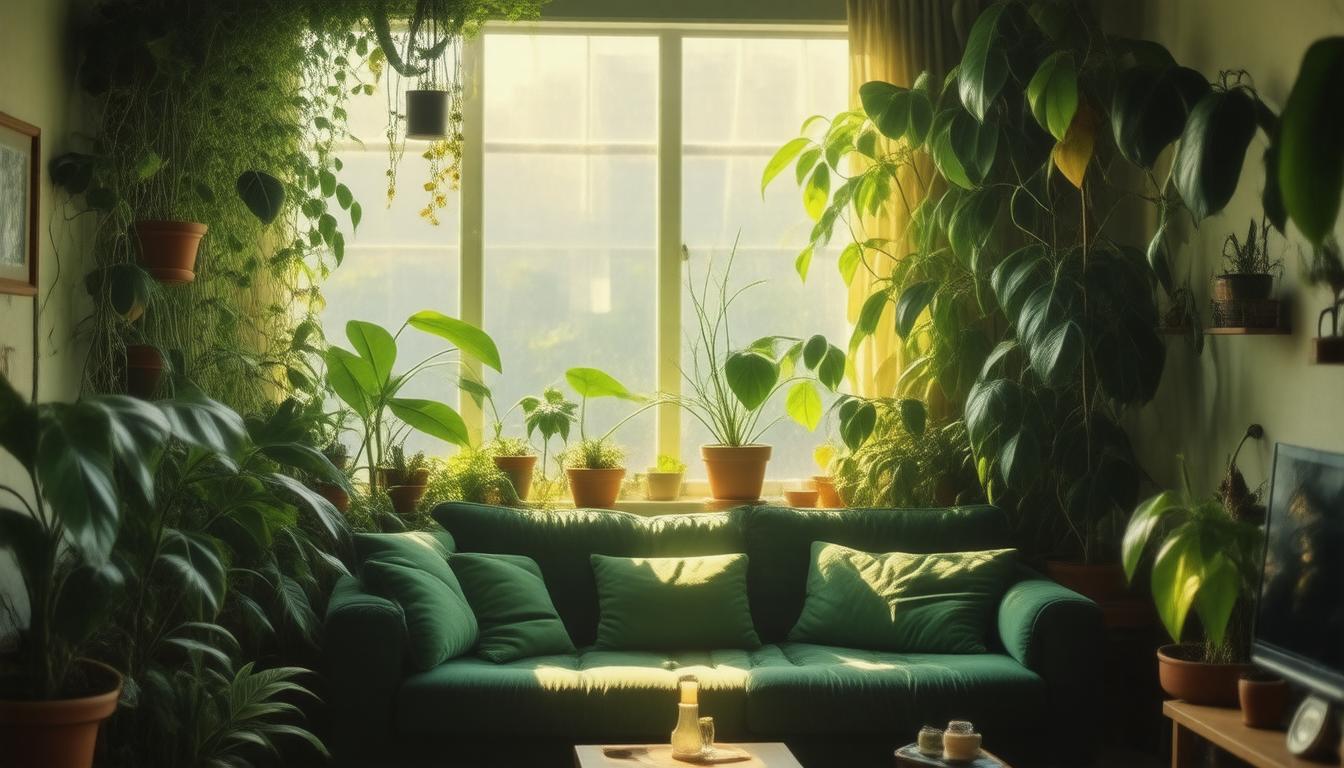Indoor plants have become an integral part of home decor, not only beautifying spaces but also improving air quality and enhancing overall well-being. As more plant enthusiasts embrace the art of indoor gardening, knowing the best indoor plant tips can make all the difference between a thriving garden and a struggling one. In this article, we will explore essential indoor plant tips, covering everything from choosing the right plants to seasonal care, ensuring your greenery flourishes in any environment.
Key Takeaways
- Selecting indoor plants that suit your space and lifestyle is crucial for success.
- Understanding the light requirements of your plants can lead to healthier growth and vitality.
- Establishing a proper watering routine is essential to prevent overwatering or underwatering.
- Using the right soil and fertilizers can significantly enhance the health of your indoor plants.
- Regular maintenance and pest management ensure that your indoor greenery stays thriving throughout the seasons.
Choosing the Right Indoor Plants for Your Space
Choosing the right indoor plants for your space can significantly enhance your home’s ambiance while providing numerous health benefits, such as improved air quality and increased humidity. When selecting indoor plants, consider a few indoor plant tips to ensure that your choices complement both your aesthetic preferences and your living conditions. First, assess the lighting available in your space; for instance, some plants thrive in bright, indirect light, while others prefer low-light environments. Additionally, think about your maintenance preferences—if you’re a novice, opt for hardier options like snake plants or pothos, which are both forgiving and easy to care for. Lastly, factor in the size of your space; larger plants can become striking focal points, whereas smaller varieties can be tucked into shelves or tables for a whimsical touch. By incorporating these indoor plant tips, you can create a vibrant, lush indoor garden that suits your lifestyle.
Understanding Light Needs for Indoor Plants
When it comes to nurturing your indoor plants, one of the most critical indoor plant tips revolves around understanding their light needs. Different varieties of houseplants thrive under varying light conditions, and recognizing these requirements enhances their growth and overall health. For instance, tropical plants like snake plants and pothos flourish in moderate to low light, making them ideal for rooms with indirect sunlight. Conversely, succulents and cacti require bright, direct light to prosper. It’s essential to place your plants in locations that match their specific light needs; for example, a south-facing window is often perfect for light-hungry species. Additionally, rotating indoor plants occasionally can help them grow evenly and avoid leaning toward light sources. By mastering the light requirements of your indoor plants, you’ll set the foundation for a thriving indoor garden.
‘The love of gardening is a seed once sown that never dies.’ – Gertrude Jekyll
Watering Techniques and Frequency for Healthy Growth
When it comes to ensuring your indoor plants thrive, understanding the right watering techniques and frequency is crucial. One of the best indoor plant tips is to adopt the ‘soak and dry’ method, which means thoroughly watering your plants until water drains from the bottom of the pot, then allowing the soil to dry out slightly before the next watering. This approach mimics the natural watering cycle that many plants experience in their native environments. Additionally, be mindful of the specific needs of your plants; for instance, tropical plants might require more frequent watering compared to succulents that prefer dryer conditions. Using a moisture meter can also help you accurately gauge when it’s time to water again. By mastering your watering techniques through proper scheduling, you’ll promote healthy growth and vibrant leaves, ultimately enhancing the beauty of your indoor space.
Soil and Fertilization Tips for Thriving Plants
When it comes to nurturing your indoor plants, understanding soil and fertilization is crucial for their health and vibrancy. Indoor plant tips emphasize the importance of using the right type of soil tailored to your plant species; for example, succulent and cactus mix is excellent for moisture-draining plants, while a peat-based mix benefits tropical plants that thrive in humid environments. Additionally, incorporating organic matter like compost can enhance soil fertility and structure, promoting better root growth. Fertilization is equally important; using a balanced, water-soluble fertilizer every four to six weeks during the growing season helps provide essential nutrients without overwhelming your plants. Remember to tailor the fertilization schedule to the specific needs of your indoor plants, as they vary significantly. With the right soil and thoughtful fertilization, your indoor plants will flourish and bring life and color to your home.
Common Indoor Plant Pests and How to Manage Them
When nurturing your indoor plants, it’s essential to keep an eye out for common pests that can disrupt their growth and vitality. The most frequently encountered indoor plant pests include aphids, spider mites, and mealybugs. Aphids are small, soft-bodied insects that tend to cluster on new growth, sucking the sap from your plants. To manage aphids, shower your plants with water to dislodge them, or apply insecticidal soap for a more aggressive approach. Spider mites, particularly prevalent in dry conditions, leave fine webs on the undersides of leaves. Regularly misting your plants and ensuring adequate humidity can help prevent these pests, while neem oil is an effective remedy if you find them. Mealybugs are characterized by their cotton-like appearance and can be scraped off with a cotton swab dipped in alcohol. To further safeguard your indoor garden, remember to inspect new plants before bringing them home and keep your plants healthy and stress-free with these indoor plant tips.
Seasonal Care and Maintenance for Indoor Plants
Seasonal care and maintenance for indoor plants is essential to keep your green friends thriving throughout the year. Following some practical indoor plant tips can help you adapt your care routine as the seasons change. For instance, during the warmer months, ensure your plants are getting adequate sunlight and adjust watering schedules, as they will need more moisture due to increased evaporation. Conversely, as temperatures drop in the fall and winter, it’s crucial to reduce watering frequency, as most indoor plants go into a dormant state and require less hydration. Additionally, consider relocating your plants to avoid cold drafts and ensure they’re getting enough light; this may mean moving them closer to windows or using supplemental grow lights. Regularly dusting leaves and inspecting for pests during seasonal changes will also keep your plants healthy and vibrant. By implementing these indoor plant tips throughout each season, you can enjoy lush, thriving greenery in your home year-round.
Frequently Asked Questions
What are the best indoor plants for beginners?
Some of the best indoor plants for beginners include pothos, snake plants, peace lilies, and spider plants. These are low-maintenance and resilient, making them ideal for those just starting their indoor gardening journey.
How can I determine the right amount of light for my indoor plants?
To determine the right amount of light for your indoor plants, observe how much natural light enters your space. Identify areas with low, medium, or bright light and choose plants accordingly. South-facing windows provide the most light, while north-facing ones offer the least.
How often should I water my indoor plants?
The frequency of watering indoor plants varies based on the plant type, pot size, and environmental conditions. Generally, allow the top inch of soil to dry out before watering. It’s important to check each plant individually rather than sticking to a strict schedule.
What type of soil should I use for indoor plants?
Indoor plants typically thrive in well-draining potting mixes. A general-purpose potting soil is suitable for most plants, while specific plants may require specialized mixes, such as cactus soil for succulents or orchid mix for orchids.
How can I prevent and manage indoor plant pests?
To prevent and manage indoor plant pests, regularly inspect your plants for signs of infestation, such as webs or discolored leaves. You can use insecticidal soap or neem oil to treat pests, and maintaining good air circulation and proper watering can help minimize their occurrence.




